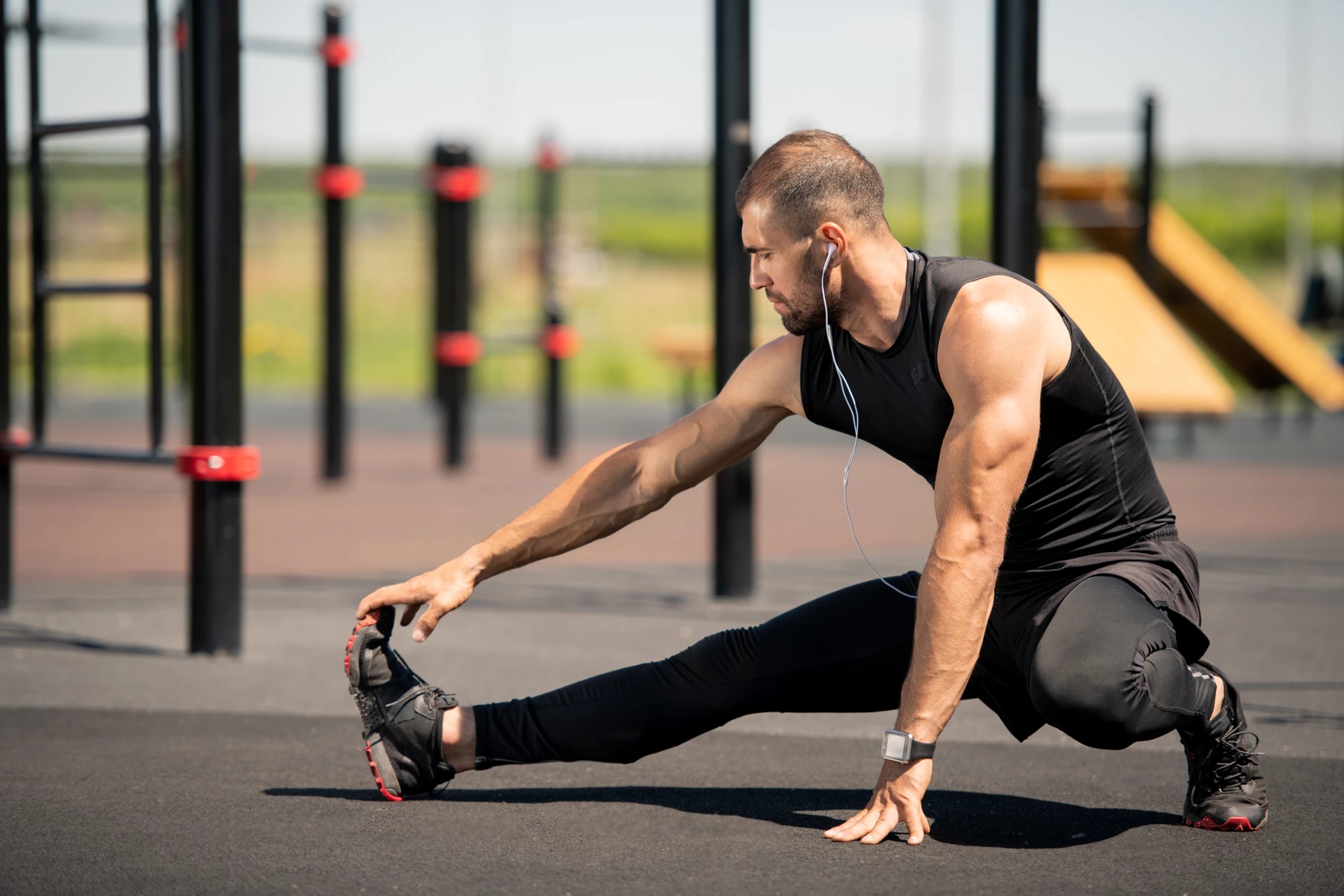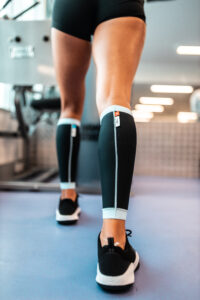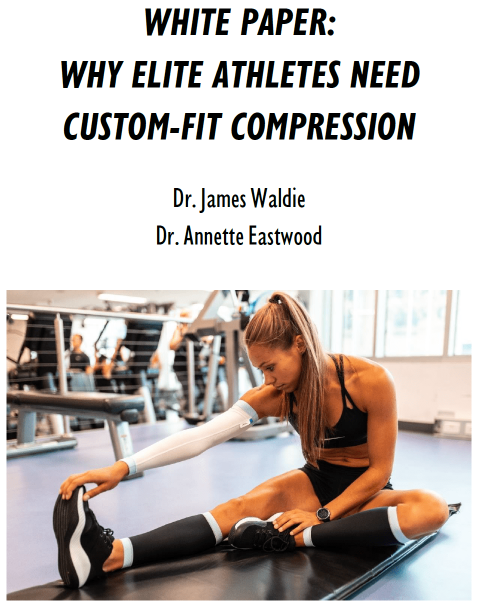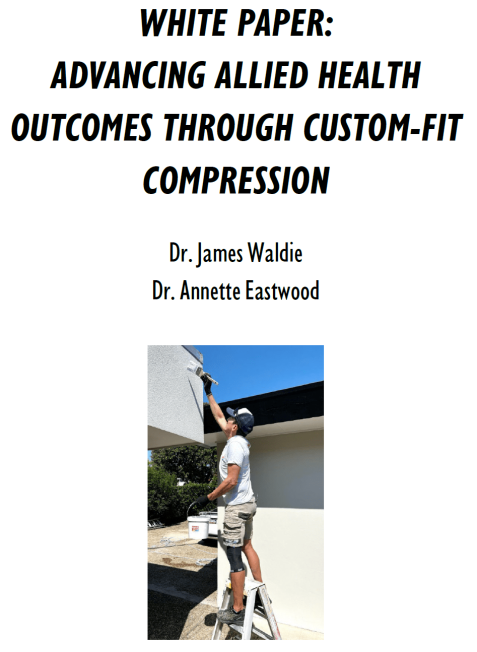Compression garments have been used widely by elite and recreational athletes for many years. However, there are a number of myths surrounding the use of these garments. CAPE Bionics Sports Physiologist Dr Annette Eastwood separates the facts from fiction:
1) All compression garments are the same: FALSE
Comparison between different brands has shown that there are differences in the amount of pressure applied. In a study comparing 3 commercially available brands of compression tights, the pressure at the thigh and calf varied considerably for the same sized garment (Hill et al., 2015).
2) Compression garments can be sized according to height and weight: FALSE
Off the shelf compression garments are sized on measures of height and body mass. This means that athletes of vastly different shapes and sizes are fitted to the same size garment. Consequently, the amount of compression applied is different for each athlete. In some cases, the compression would be inadequate for any benefits and in other cases the compression may be excessive and detrimental (Wannop et al., 2016). Therefore, compression garments should be customised to an individual athlete to ensure the correct compression regime.
3) Custom fit compression garments are recommended by the latest research: TRUE
Custom fitted compression garments are fitted perfectly to the individual athlete ensuring that the most optimal compression regime is applied. Recent research advocates the use of custom fitted compression garments for optimal benefit (Brophy Williams et al., 2020). A recent study comparing custom fit compression garments against standard sized garments, showed that the custom fit garments improved strength recovery and markers of muscle damage in Rugby players compared to standard sized garments (Brown et al., 2020).
4) Different types of compression garments are required for different purposes: TRUE
Different levels of compression are required for different purposes. For example, compression garments for performance where the heart rate and blood flow are high, are vastly different to compression garments for travel where heart rate is low and there is limited movement. Compression garments should be tailored to their specific purpose and therefore different garments are required for performance, recovery, travel, and rehabilitation.
5) Compression garments should be as tight as possible for optimum benefit: FALSE
It is a misconception that tighter garments are better. If compression is too high, the physiological response can be vasoconstriction which reduces blood flow, and may even cause other issues such as compartment syndrome or gout. It has been shown that garments that are too even a little too tight may have a detrimental effect ,and be worse than wearing no compression at all (Wannop et al., 2016). This highlights the importance of having garments that are custom fitted to the individual athlete.
6) Left and right side garments should be sized differently: TRUE
It is very common for individuals to have different sized limbs. Off the shelf compression brands do not account for these differences within individuals. CAPE provide custom fitted compression garments based on a scan of each limb separately. Therefore, the size of the left and right garment differ slightly to ensure a perfect fit and optimal compression.
7) Compression garments can benefit both physiological and psychological markers of recovery: TRUE
Wearing compression garments following training or competition may enhance recovery. Compression garments have been found to reduce muscle swelling and creatine kinase levels during the recovery period, which is the suggested mechanism by which compression garments facilitate recovery. It has also been widely reported that wearing compression garments can reduce muscle soreness, and improve an athlete’s perception of recovery, highlighting the benefits on psychological aspects of recovery (Brown et al., 2017).
8) CAPE provide the most optimum compression garments both on and off the planet: TRUE
CAPE garments have been designed based on years of research in the aerospace industry. CAPE founder Dr James Waldie designed compression suits for astronauts that were worn on the International Space Station in 2017 before applying his research findings to the development of the most optimal compression garments for elite athletes.
REFERENCES:
-
Brophy-Williams, James W. Fell, Shona L. Halson, Cecilia M. Kitic & Matthew W. Driller (2020): Pressure gradient differences between medical grade and sports compression socks, The Journal of The Textile Institute, DOI: 10.1080/00405000.2020.1730664
-
Brown, F., Gissane, C., Howatson, G., van Someren, K., Pedlar, C., & Hill, J. (2017). Compression Garments and Recovery from Exercise: A Meta-Analysis. Sports Medicine, 47, 2245-2267.
-
Brown, F, Jeffries, O, Gissane, C, Howatson, G, van Someren, K, Pedlar, C, Myers, T, and Hill, JA. (2020): Custom-fitted compression garments enhance recovery from muscle damage in rugby players. J Strength Cond Res.
-
Hill, J., Howatson, G., Someren, K., Davidson, S., & Pedlar, C. (2015). The variation in pressures exerted by commercially available compression garments. Sports Engineering (Springer Science & Business Media B.V.), 18, 115-121.
-
Wannop JW, Worobets JT, Madden R, Stefanyshyn DJ. (2016) Influence of Compression and Stiffness Apparel on Vertical Jump Performance. J Strength Cond Res. 30(4):1093-101.





